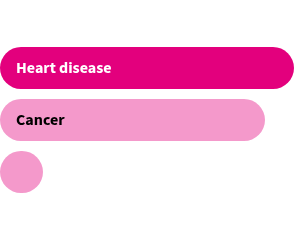Is flying safer than driving?
The injury rate for US airline passengers is near zero per 100 million passenger miles.
It’s safer to travel the US by air than on highways, according to US Transportation Department data. From 2002 to 2022, fewer people were hurt or killed each year while flying than riding in passenger cars and trucks. Flying is also safer than riding subways, trains, buses, or motorcycles.
What is the safest way to travel?
Air travel is the nation’s safest form of transit. Injury and death rates in US air travel have been almost zero per 100 million passenger miles traveled since 2002, and the number of aviation accidents declined from 2000 to 2022.
In 2022, there were 47 passenger injuries over 709 billion miles of air travel — you could circle the globe over 600,000 times for every one airplane injury.
Comparing passenger injuries
There was a total of 689 serious injuries in US air travel from 2002 to 2022, an average of 33 per year. In that same time, 48 million people were hurt in passenger vehicles on US highways — that’s approximately 2.3 million per year.
In 2022, passengers in cars and trucks were injured at a rate of 42 per 100 million miles traveled. For air travel, it was 0.007 per 100 million miles.
The most dangerous form of travel was via motorcycle — motorcyclists got injured at a rate of 339.3 per 100 million miles. That’s more than six times the rate of any other form of transportation.
From 2002 to 2022, a total of 796 people died during US air travel, including 19 in 2022. Twenty-seven percent of those occurred during scheduled commercial flights; 73% of air travel deaths involved on-demand air taxis, small aircraft of 10 seats or fewer that make trips on demand.
Passenger car and truck accidents accounted for 552,009 deaths on highways during that timeframe, an average of 26,286 fatalities per year.
In 2022, the fatality rate for people traveling by air was .003 deaths per 100 million miles traveled. The death rate people in passenger cars and trucks on US highways was 0.57 per 100 million miles.

How safe is highway driving?
About 1.94 million people were injured in a car or truck accident on US highways in 2022. Another 82,687 were hurt in motorcycle crashes, which have the highest per-mile injury rate of any form of transportation.
Injury rates for passengers in cars and trucks have declined in recent years, from more than 54 injuries per 100 million passenger miles in 2016 to 42 in 2022. Motorcycle injury rates have also dipped, from 440 per 100 million miles in 2016 to 339 in 2022. As a response to elevated rates, the Department of Transportation developed a National Roadway Safety Strategy to encourage safe and responsible driving, better roadway design to mitigate human error, safer vehicle design, less speeding, and increased access to emergency response.
Fatality rates, on the other hand, have risen in the last decade-plus on American highways. Fatalities in car and truck accidents reached 0.57 per 100 million miles in 2022, the highest rate since 2007. The motorcycle fatality rate recently peaked at 26.0 deaths in 2020, the highest since 2006.
How safe is public transit?
Public buses and trains (including subways and streetcars) accounted for 8,030 passenger injuries and 26 fatalities in the US in 2023, the most recent year of available Transportation Department data.
Buses accounted for 89% of passenger injuries from public transit in 2023 but only 38% of transit passenger deaths, while trains accounted for the rest.
How safe is passenger railroad travel?
Passenger rail includes commuter rail and Amtrak. According to preliminary 2023 data, there were 625 injuries and one fatality on passenger railroad services.
Railroad passenger injuries reached a recent high in 2016 before falling nearly two-thirds over the next seven years. Over the same period, miles traveled by rail fell 30%.
Dig into data on air traffic controllers and get the facts directly in your inbox by subscribing to our weekly newsletter.
Keep exploring
Page sources
Bureau of Transportation Statistics
Injured Persons by Transportation Mode
Bureau of Transportation Statistics
National Transportation Statistics
